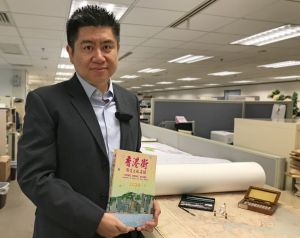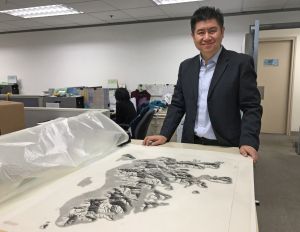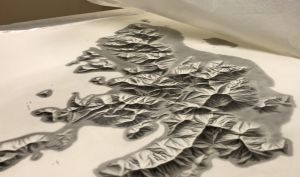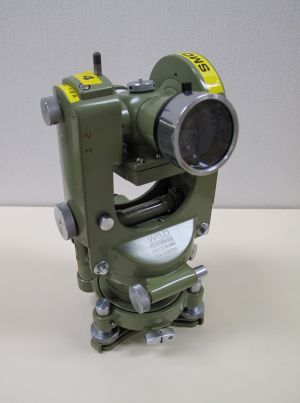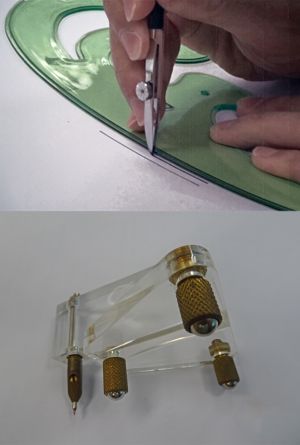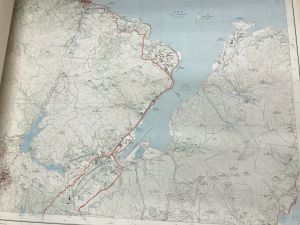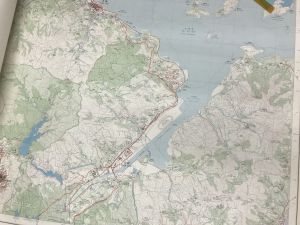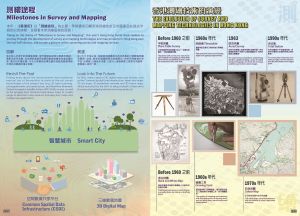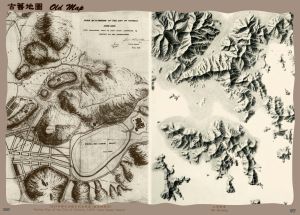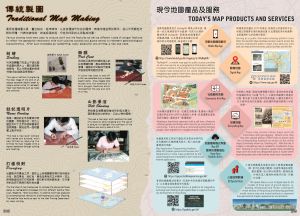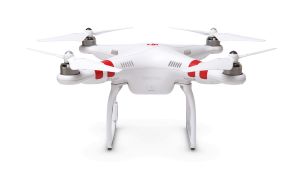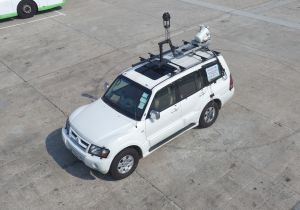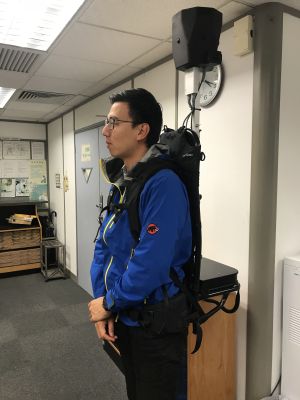The evolution of mapping technologies in Hong Kong
|
For most of us, the word “map“ may conjure up images of search engines on personal computers, tablets or smart phones, but hardly do we know that it has taken as long as half a century for the maps of Hong Kong to transform from paper format to digital format on the electronic platform. Today, I have specifically invited a colleague from the Survey and Mapping Office (SMO) of the Lands Department (LandsD) to journey through the development of our mapping technologies and map products with us, and show us how the maps have witnessed the changes of our city. Laborious traditional map-making The SMO of the LandsD is the central authority for land surveys and all types of mapping in Hong Kong. Mr CHONG Wai-ming, Keith, the Cartographer, says that traditional surveying and map production involves field survey, measurement and map-making, which take a lot of manpower and are very time consuming. Quoting the “theodolite” used for land survey in the 1960’s for an example, he says that the surveyor had to measure the angles and apply trigonometry to work out the distance, as the device could not show it directly. Besides, maps were manually drawn by the cartography team, and therefore it took more than a year to update a map. Maps were manually drawn by hand Mr CHONG takes out a hill shading image of the Hong Kong Island hand-drawn in the 1980’s (shown in picture). He says, back then the colleagues had to learn hill shading abroad, which was a highly professional mapping skill performed with a pencil. He also shows various types of map-making tools, such as a plier-like ruling pen for drawing lines, a graphos pen for inserting alphabet types, and a swivel cutter for parallel curves. In those days, cartographers represented the spatial relationship between buildings and roads through lines and geometric designs. They also needed to add symbols and place names on different plastic sheets. After that, they had to add hill shading and etched sea areas before a positive film could be produced for plate printing. For those who are interested in old maps, a plan of the City of Victoria Hong Kong made in 1889 is available for free download from the LandsD’s website. Enhanced accuracy brought by technology Traditional map-making is very time consuming. With the rapid development of science and technology, the SMO has adopted advanced technology to improve the efficiency, such as laser scanning, vehicle-based and backpack mobile mapping system, digital aerial camera and unmanned aerial vehicle to collect data, and transform it to a map through the Geographic Information System and mapping softwares. The new technology not only substantially pares down the manpower and time involved but also greatly enhances the accuracy of mapping, and hence expedites map updates, which facilitate further planning and analysis. New map products Map products have also seen changes, evolving from black and white maps in the 1960’s, full-colour maps in the 1970’s, to computerised mapping since the mid-1990’s, transforming the concept of a map from print-outs to images on electronic devices, such as personal computers, tablets and mobile phones. The rapid changes in the daily life of Hong Kong people are reflected on the application of maps as well. While maps were mostly used only for hiking in the past, they have now become a broadly used and convenient tool for venue exploring, shop searching, or even trip planning nowadays. Witnesses of Hong Kong’s rapid development Mr CHONG says the coastlines, building density, road networks and infrastructures in our city have experienced rapid changes and development over the past 50 years, and these are all put down in the maps. Quoting two maps of Shatin area on scale 1:20 000 published in the 1970’s as examples, he says the Shing Mun River does not exist in the first version, which was produced in 1974, as the reclamation had not taken place. The updated version produced three years later shows the racing course, but the location where City One Shatin now stands is still a stretch of sea area. From different map versions, we can clearly see the unique topographical and social developments Hong Kong has undergone over the past decades. Be it a piece of paper product or a digital map for the web, the map products of the LandsD are closely related to our daily life. The "Hong Kong Guide" Gazetteer of Street and Place Names 2020 is now on sale, and the "e-HongKongGuide", its electronic verision, is also available for free download. The LandsD will continue to introduce cutting-edge survey and mapping techniques to consolidate map information, and release map products and spatial data to the public with a view to building Hong Kong into a smart city. |
5 April, 2020
Back